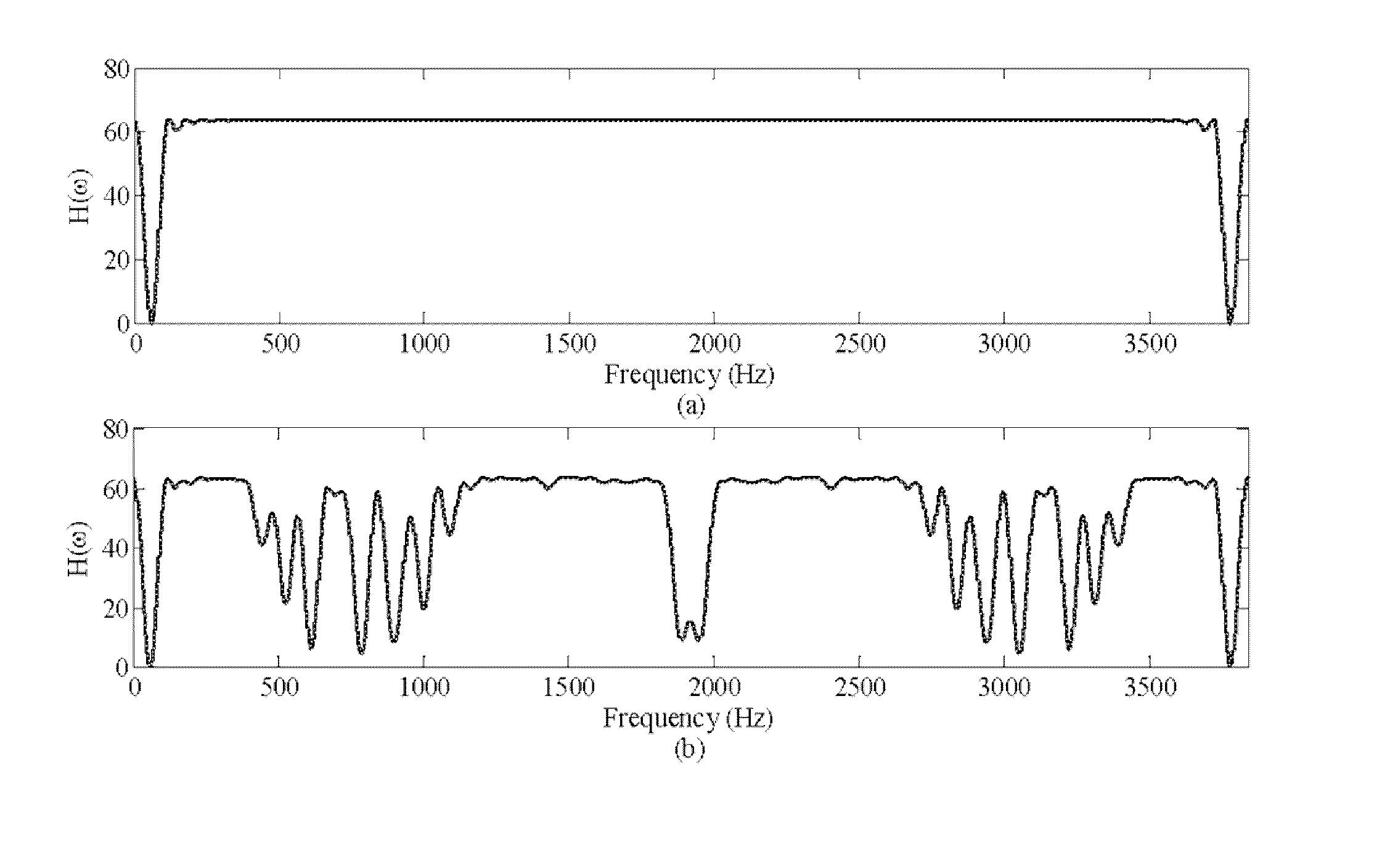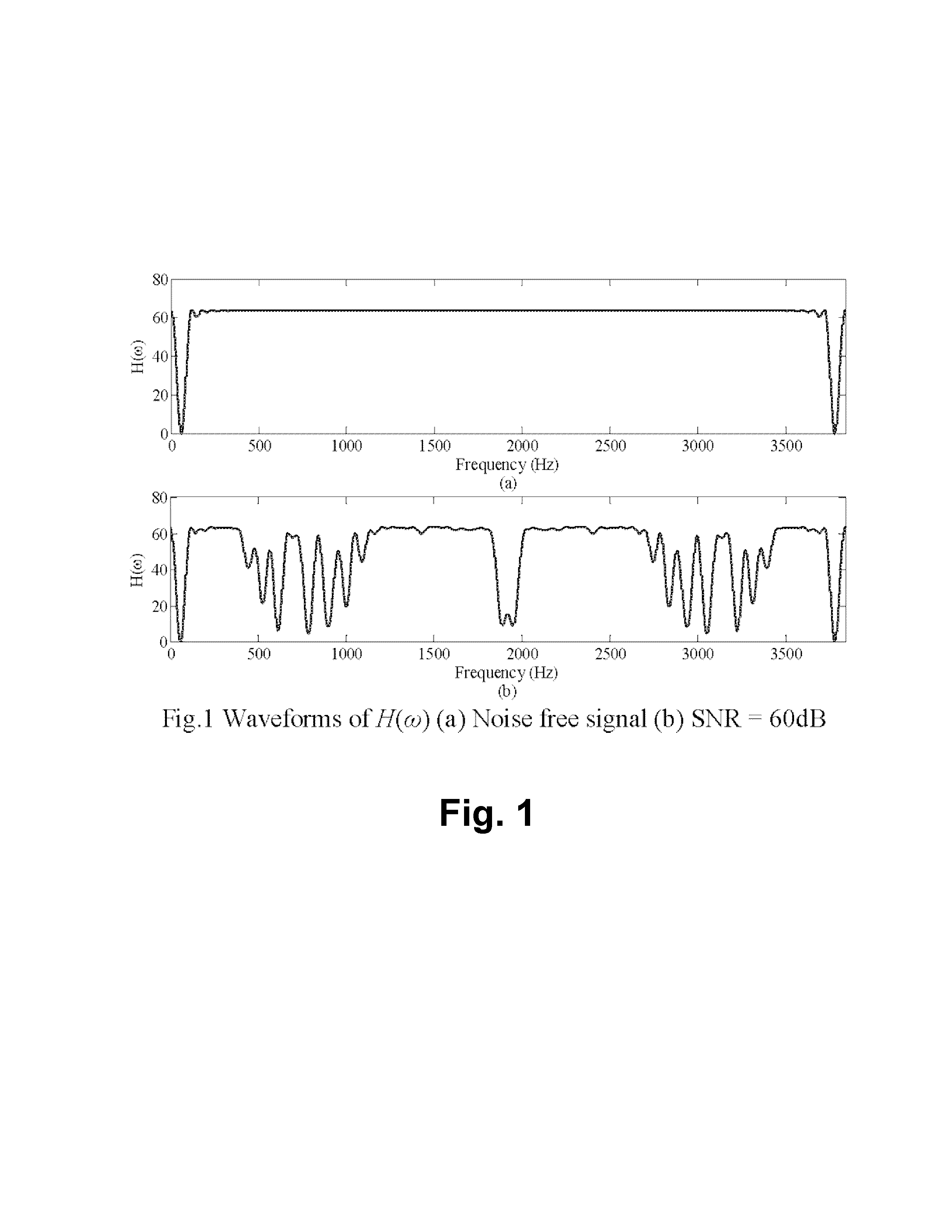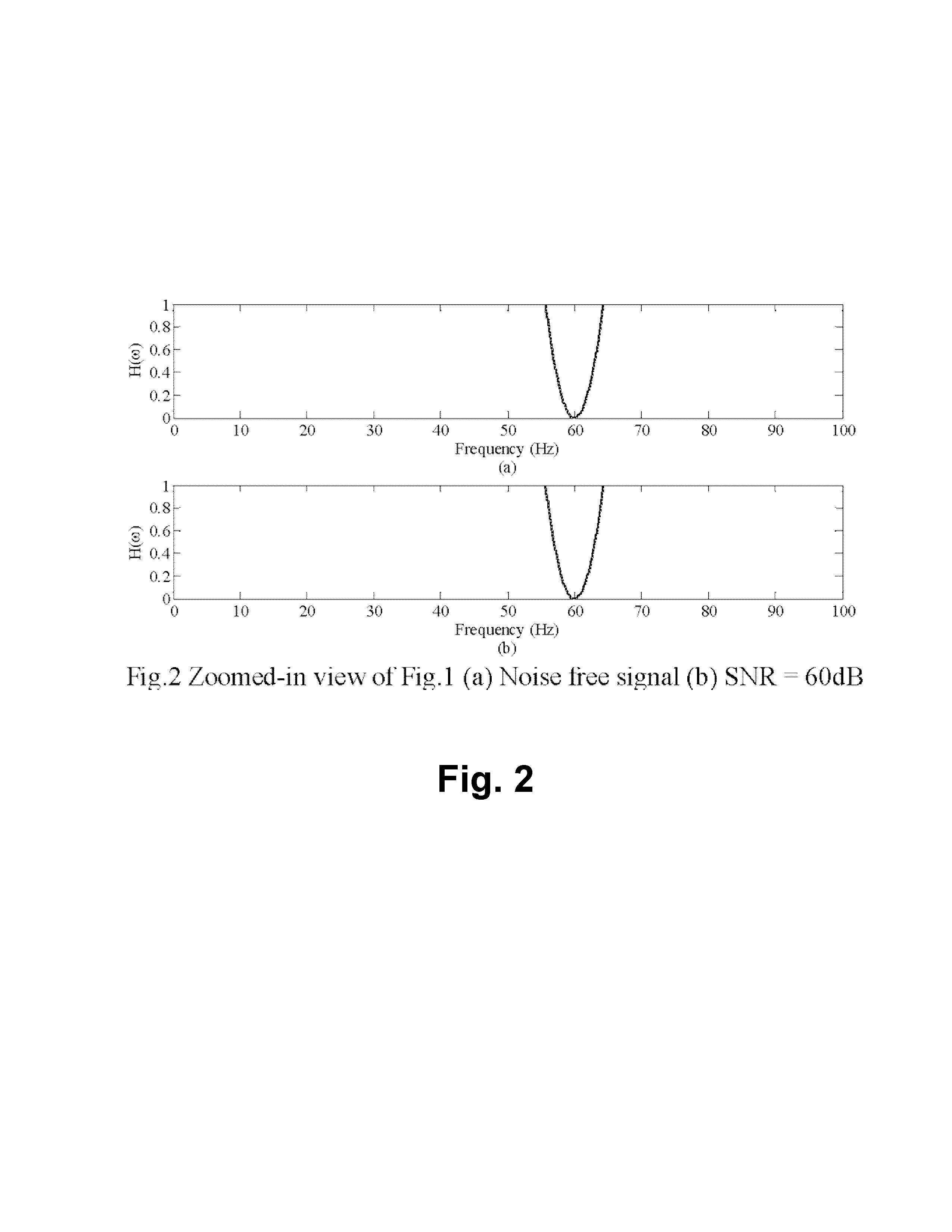Robust high resolution spectrum estimation method for accurate phasor, harmonic and interharmonic measurement in power systems
a spectrum estimation and high-resolution technology, applied in the direction of electric devices, instruments, transportation and packaging, etc., can solve the problems of resolution, significant leakage and picket fence effects of dft, severe harmonic and interharmonic distortion in power system signals, etc., to achieve enhanced noise tolerance, robust and accurate, and high frequency resolution
- Summary
- Abstract
- Description
- Claims
- Application Information
AI Technical Summary
Benefits of technology
Problems solved by technology
Method used
Image
Examples
case 1
[0094]
x(n)=∑iAicos(n2πfiΔt+φi),
where values of Ai, fi, and φi are given in Table I below. The test signal is composed of five tones: fundamental frequency component at 60 Hz, 9th harmonic at 540 Hz, and three interharmonic components at 98 Hz, 252 Hz and 312 Hz.
TABLE ITable I: Signal Parameters and Measurement Results Using S-LMSSIGNAL PARAMETERS AND MEASUREMENT RESULTSUSING S-LMSAiActual values1.000.200.100.100.02(pu)Measured values1.000.200.100.100.02fiActual values60.098.0252.0312.0540.0(Hz)Measured values60.098.0252.0312.0540.0φiActual values0.0060.0030.000.0090.00(°)Measured values0.0060.0030.000.0090.00
[0095]The spectra obtained by Discrete Fourier transform (DFT) and by S-LMS are illustrated in FIGS. 5(a) and 5(b), respectively. FIG. 6(a) is a magnified view of a portion of FIG. 5(a), and FIG. 6(b) is a magnified view of a portion of FIG. 5(b) in the area where the x-axis is from 0 to 600 Hz and the y-axis is from 0 to 0.25. As can be seen most clearly in FIG. 6(a), the DFT f...
case 2
[0096] x(t)=cos(2πf1t+φ1)+0.2 cos(2πf2t+φ2), where f1=60 Hz, f2=60.2 Hz, φ1=0, and φ2=π / 6.
[0097]Case 2 was a study to verify the ultra-high resolution of S-LMS. The test signal carries two components with a frequency difference of Δf=0.2 Hz. To separate these two components in Case 2, the DFT method needs a data window length longer than 1 / Δf, that is, at least 5 seconds. In contrast, S-LMS does not have such stringent limitations, and can separate the two components accurately with a data window of 1 / 30 seconds.
[0098]FIG. 9(a) and FIG. 9(b) show the spectra obtained by DFT and S-LMS, respectively, with a data window length of 1 / 30 seconds. FIG. 10(a) is a magnified view of a portion of FIG. 9(a), and FIG. 10(b) is a magnified view of a portion of FIG. 9(b) in the area where the x-axis is from 59.9 to 60.3 Hz and the y-axis is from 0 to 1e-5. From FIGS. 9 and 10, it can be seen that DFT was unable to distinguish the two components. Instead, they are merged together in the DFT spectr...
case 3
[0100]
x(n)=∑iAicos(n2πfiΔt+φi)+w(n)
where w(n) is a white noise such that SNR is 50 dB, and values of Ai, fi, and φi are given in Table III below.
TABLE IIITable III; Signal Parameters and Measurement Results UsingS-LMS (SNR = 50 dB)SIGNAL PARAMETERS AND MEASUREMENT RESULTSUSING S-LMS (SNR = 50 DB)AiActual value1.000.200.100.100.02(pu)Measured value1.000.200.100.100.02fiActual value60.098.0252.0312.0540.0(Hz)Measured value60.098.0252.0312.0539.6φiActual value0.0060.0030.000.0090.00(°)Measured value0.0059.8929.960.0089.50
[0101]The signal in Case 3 is similar to that in Case 1, with the only exception of the 50 dB white noise. FIGS. 12(a) and 12(b) are the spectra obtained using DFT and S-LMS methods, respectively. FIG. 13(a) is a magnified view of a portion of FIG. 12(a), and FIG. 13(b) is a magnified view of a portion of FIG. 12(b) in the area where the x-axis is from 0 to 100 Hz and the y-axis is from 0 to 0.25.
[0102]From these results, it can be seen that S-LMS provided high levels ...
PUM
 Login to View More
Login to View More Abstract
Description
Claims
Application Information
 Login to View More
Login to View More - R&D
- Intellectual Property
- Life Sciences
- Materials
- Tech Scout
- Unparalleled Data Quality
- Higher Quality Content
- 60% Fewer Hallucinations
Browse by: Latest US Patents, China's latest patents, Technical Efficacy Thesaurus, Application Domain, Technology Topic, Popular Technical Reports.
© 2025 PatSnap. All rights reserved.Legal|Privacy policy|Modern Slavery Act Transparency Statement|Sitemap|About US| Contact US: help@patsnap.com



